If you've been in suspense all week, wait no longer. Here are the answers to this year's Easter egg hunt!
Let us know how you did in the comments below. And be sure to follow us on Facebook, Twitter, and Instagram!
1. Brown Garden Snail
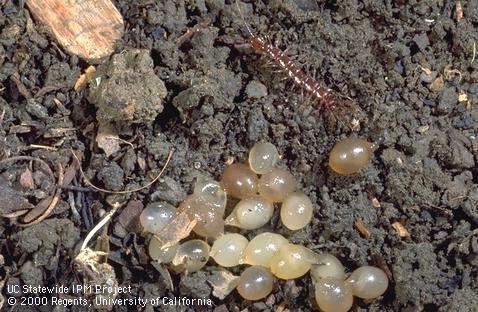
(Credit: Jack Kelly Clark)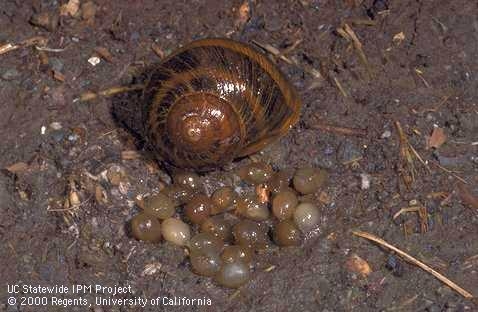
The brown garden snail, Cornu aspersum, is the most common garden snail in California. Snails and slugs feed on a wide variety of plants, creating irregular holes by scraping with their tongues. A combination strategies including hand-picking, trapping, barriers, and baiting is recommended for best management. Learn more from our Pest Notes: Snails and Slugs.
2. Boxelder Bug
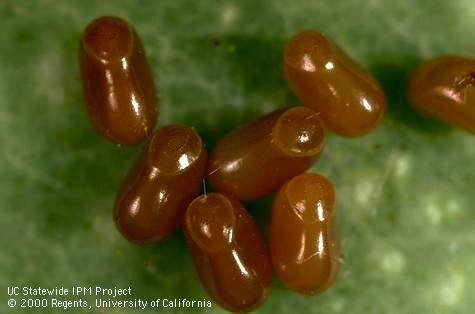
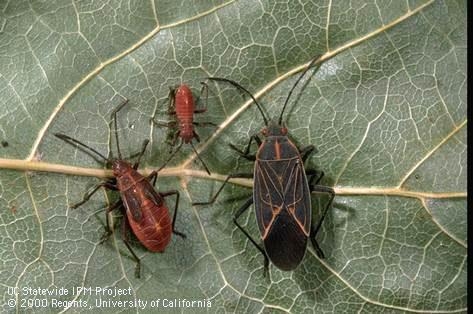
The western boxelder bug can be a nuisance in and around homes. While they typically feed on box elder trees, they may also feed on fruit trees including apple, cherry, peach, pear, and plum. Boxelder bugs can be confused with squash bugs, milkweed bugs, or leaffooted bugs. Their eggs are yellow when first laid, but turn red as the immature bugs develop. Learn more about boxelder bugs and their management from our Pest Notes: Boxelder Bug.
3. Citrus Cutworm
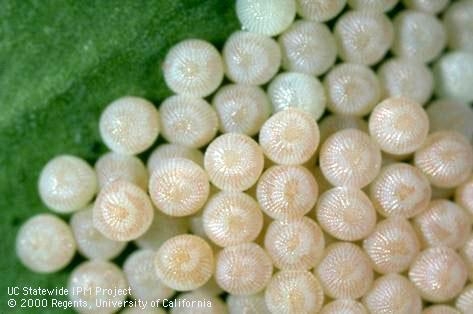
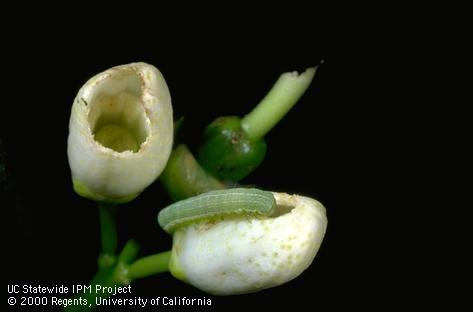
Citrus cutworms have a distinct white stripe on each side of the body and damage citrus trees by feeding on leaves, blossoms, or fruit. The gray adult moth can lay up to 200 eggs per cluster. Learn more about citrus cutworm on our website.
4. Consperse Stink Bug
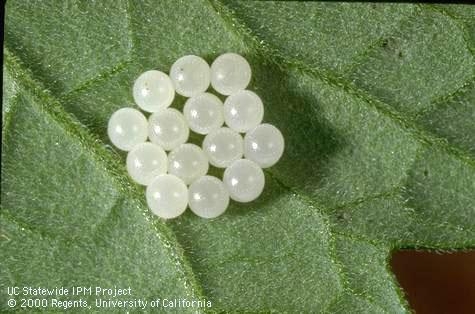

The consperse stink bug is one of the most common garden pests in California, found most often in fruit and nut trees. They feed on a variety of fruits like peaches and pears, leaving blemishes or depressions in the developing fruit. Stink bugs have drum-shaped eggs with tops that look like circular “lids” that are typically laid in clusters on leaves. Learn more about the consperse stink bug and other stink bugs on our website.
5. Green Stink Bug
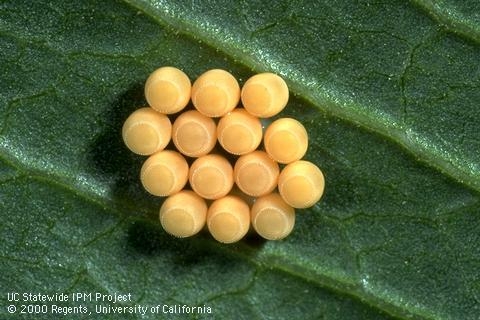
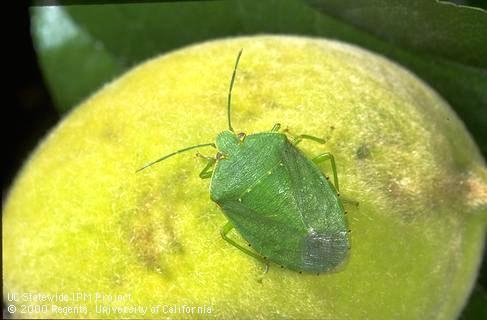
The green stink bug is another common stink bug species found in gardens. Named for its bright green color, it is typically large than other stink bugs at about 1/2-inch in length. Their damage is similar to other stink bugs, like the consperse stink bug. Likewise, their eggs have similar shapes, with up to 100 eggs per cluster. Learn more about the green stink bug and other stink bugs on our website.
6. Imported Cabbageworm
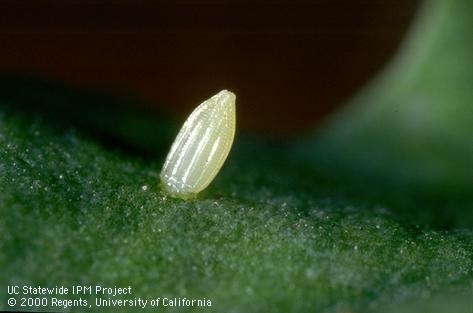
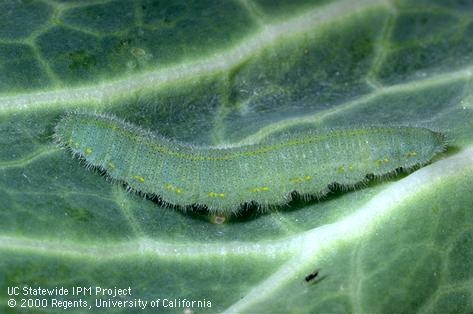
Imported cabbageworm larvae (caterpillars) are voracious eaters. They leave large, irregular holes in cabbage leaves and bore into cabbage heads. The adult cabbage butterflies are white with one to four black spots on their wings and lay single eggs on leaves, rather than in clusters. Learn more about imported cabbageworms and their management on our website.
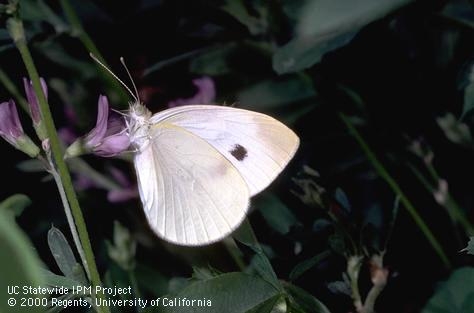
7. Omnivorous Leafroller
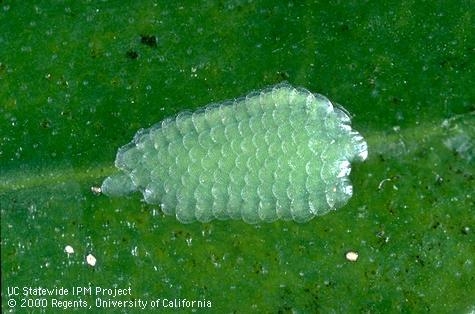

The omnivorous leafroller is a caterpillar of a certain kind of moth. Adult moths have a bell shape when at rest while larvae (caterpillars) will roll or curl leaves with silk webs. In addition to rolling leaves, larvae will feed on foliage, blossoms, fruits or nuts. Learn more about the omnivorous leafroller on our website.
8. Squash Bug
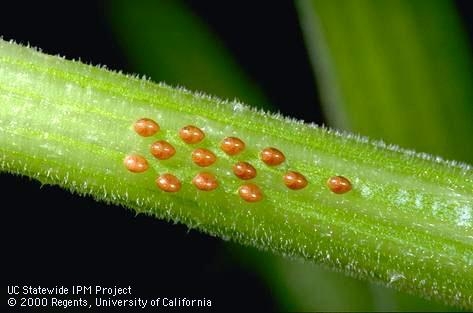
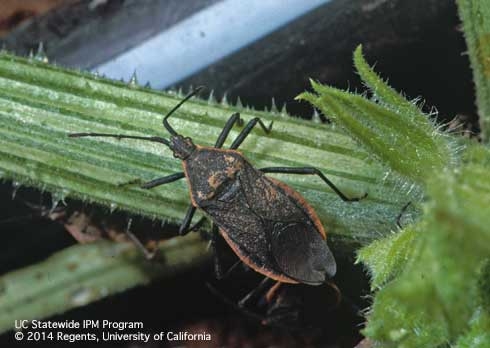
Squash bugs are a pest of cucurbit crops such as pumpkin, squash, and melon. Their population can reach large numbers quickly as eggs are laid in groups of 15 to 40 on leaves and stems of cucurbit plants. The adults are about 5/8-inch long and grayish brown in color. The immature squash bugs (nymphs) can vary in color when they first hatch, but eventually turn dark brown and look very similar to adults. Learn more from our Pest Notes: Squash Bugs.
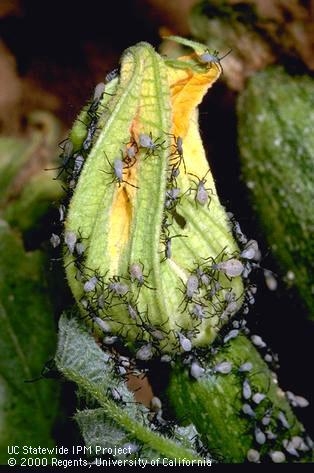
9. Tomato Fruitworm
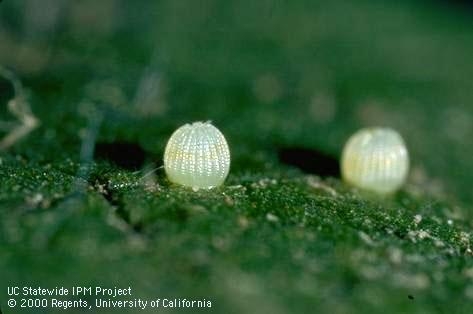
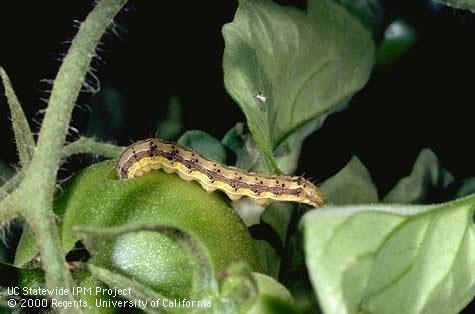
Tomato fruitworm, also called corn earworm, is a caterpillar pest of many vegetables. As they feed on leaves, buds, and flowers of vegetable crops, tomato fruitworms damage seedlings and fruit, and leave frass on the plant. The tomato fruitworm caterpillar can be distinguished from other common garden caterpillars by its distinct stripes and short hairs on its body. Adult females lay singular eggs on terminal leaflets of tomato plants. Learn more about tomato fruitworm and its management on our website.